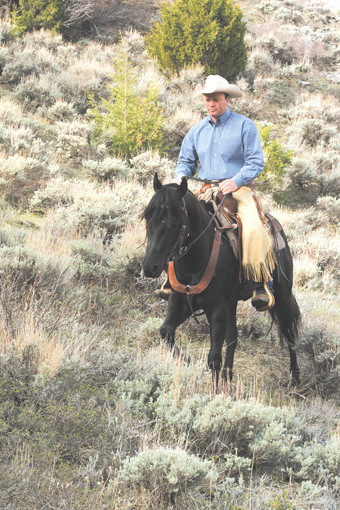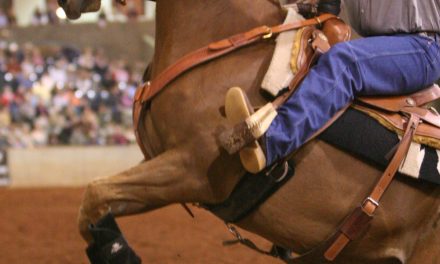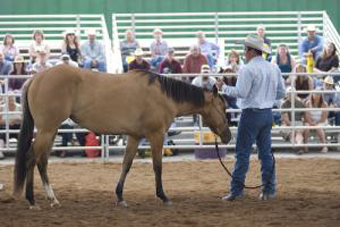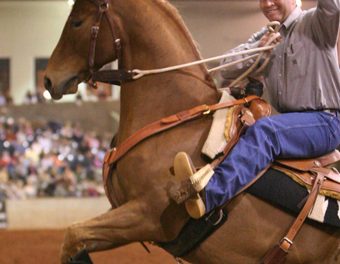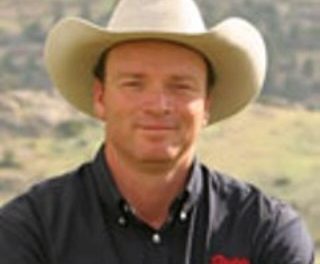 Last month, we covered teaching your horse to load in the trailer safely and calmly. Many times trailer loading problems are caused by a bad experience or an injury to the horse while he is being hauled. Problems such as these are often the hardest to fix.
Last month, we covered teaching your horse to load in the trailer safely and calmly. Many times trailer loading problems are caused by a bad experience or an injury to the horse while he is being hauled. Problems such as these are often the hardest to fix.
This month, I will talk about trailer safety, which includes inspecting and evaluating the components and features of your trailer. I’ll also talk about trailering safely and how to make your horse’s experience while going down the road as safe and relaxing as possible.
TRAILER SAFETY
Windows. Most trailers have drop down-windows, and frequently there is an option to drop the window but leave a barred barrier. I never travel with both the bars and the window down. I don’t like my horse going down the road with his head hanging out of the trailer. If you trailer with the window down and the bars up, I like to buy an aftermarket net that covers the entire window. Although the chances are slim, I don’t want to risk any debris flying in through the bars and hitting my horse as we travel. If you don’t have an aftermarket net, I would recommend traveling with the windows up–just slide the see-through part of the window open to provide air flow. To increase air flow on a hot day, you can drop the windows in the un-occupied stalls if you don’t have a full trailer.
Tie rings. Walk around the outside of your trailer. Where are the tie rings in relation to the fenders? Many trailers have a rubber molding along the fender edge, and this is great. But even if your trailer does have a rubber fender molding, try to tie your horse at one of the rings that isn’t right above the fender. Walk around your trailer asking yourself “what presents an opportunity for my horse to hurt himself or get in a wreck? How can I lessen or eliminate this opportunity?”
Preparation. Make sure your trailer is ready before you bring your horse up to it. The doors should be open and tied or latched back so they won’t swing shut on you or your horse. Make sure the dividers are open and locked back. Check the trailer for any loose tack or equipment that could slide around or get in your horse’s way while he is in the trailer. Now, you’re ready to go get your horse.
TRAILERING SAFETY
A better way to load your horse. I don’t load my horse by stepping into the trailer in front of him and leading him in. A safer and more ideal way to load is for me to stand outside the trailer door and then lead your horse in ahead of you. Then I follow him in. I throw my horse’s lead rope out through the window bars, and then I close the divider or trailer door. I walk around to the window and tie him. By closing the divider or doors first before tying my horse, it helps keep my horse from pulling back against his lead line and hurting himself if he gets scared.
Drive safely. When you are hauling horses, drive like you have a full cup of hot coffee on the dash, and you are trying not to spill any of it. What you really need to be careful of are sudden changes in speed and taking corners too fast. Everything about your driving when you are hauling horses should be as smooth and predictable as possible.
Trailer type. Personally, I prefer a slant load over a straight load trailer. In a slant load, your horse bumps into the dividers with his sides when he comes off balance in a turn and during starts and stops. In a straight load, the horse is more likely to hit his head as he is being thrown straight forward during a stop.
Bedding. Use heavy shavings rather than sawdust when adding bedding to your trailer. Fine sawdust can blow around in the wind, and it gets in your horse’s eyes, nose, and lungs.
Food. Have hay and water available for your horse at all times when we are traveling. If you fill a water bucket only two-thirds full, you won’t have much spill out. I never use food as a bribe to get my horse in the trailer, however.
Protection equipment. I believe this is the most important piece of trailering safety equipment out there in the Equiface Saver. It is a multi-layer piece of protective headgear for your horse. Before loading your horse, put on the Equiface Saver and your horse’s halter. Also put on any other safety equipment you like to use. Learn more about the Equiface Saver on my website..
Ken McNabb grew up on a cattle ranch and is a life-long horseman, as well as a popular trainer and clinician, whose methods are based on his work with John Lyons and his own experiences with horses. Ken is known as being a master communicator who helps both horse and rider become the best they can be. Ken is regularly featured on RFD-TV. Visit Ken’s website at www.kenmcnabb.com. Be sure to visit Ken McNabb at the Western States Horse Expo in Sacramento June 12 – 14.

